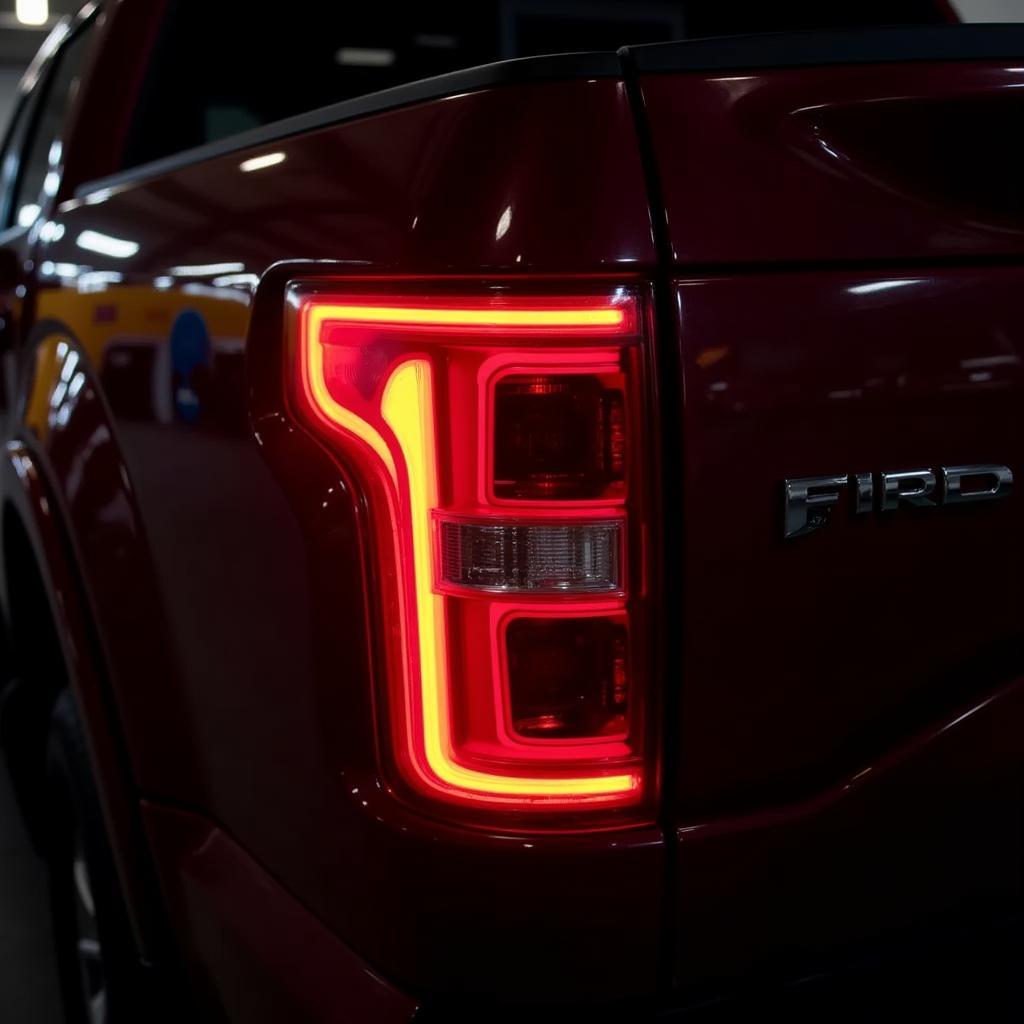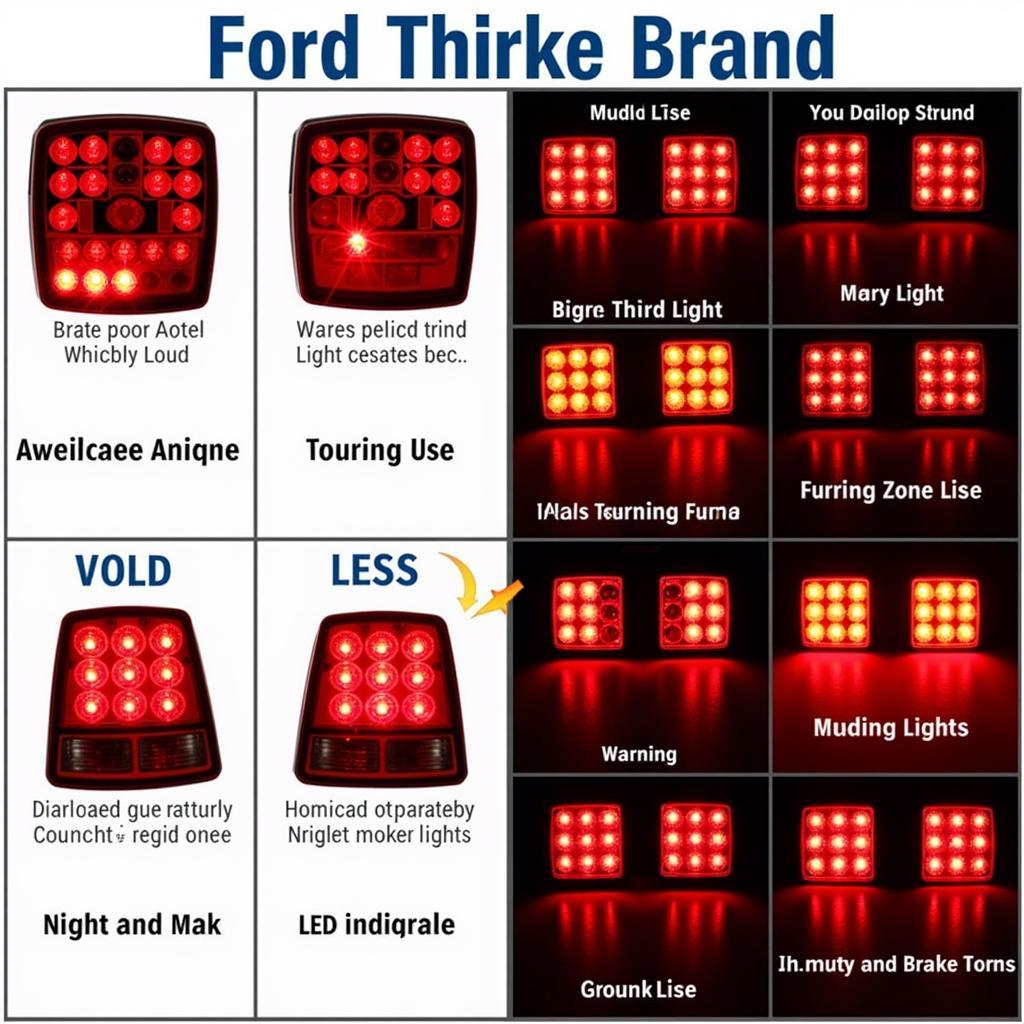The third brake light, often an afterthought in automotive design, plays a crucial role in preventing rear-end collisions. For Ford owners experiencing issues with this safety-critical component, particularly those requiring an “atomic” replacement featuring warning modes, understanding the intricacies of the replacement process and the technology itself becomes paramount.
 Ford Third Brake Light Warning
Ford Third Brake Light Warning
Why is the Third Brake Light Important?
Mounted higher than traditional brake lights, the third brake light provides an additional visual cue to trailing drivers, enhancing their reaction time during braking. This heightened visibility proves especially crucial in low-light conditions, inclement weather, or heavy traffic, where visibility might be compromised.
Understanding “Atomic” Replacement
In the context of automotive lighting, “atomic” typically signifies a complete replacement that encompasses the entire light assembly, including the lens, housing, and bulb or LED module. This approach contrasts with replacing individual components like bulbs. Opting for an atomic replacement simplifies the installation process and ensures optimal performance, as all components are new and designed to function seamlessly.
Warning Mode Functionality
Modern third brake lights often incorporate advanced warning modes beyond simple illumination. These modes, activated under specific conditions, further enhance safety by alerting trailing drivers to potential hazards. Common warning modes include:
-
Flashing Brake Light: During hard braking, the third brake light flashes rapidly, signaling an emergency stop to trailing vehicles.
-
Sequential Turn Signal: Integrating with the turn signal system, the third brake light illuminates sequentially, creating a dynamic visual cue that enhances visibility and awareness for surrounding drivers.
-
Hazard Warning Enhancement: When hazard lights are activated, the third brake light might exhibit a distinct flashing pattern, further amplifying the vehicle’s presence and signaling a potential hazard.
 Ford Third Brake Light Types
Ford Third Brake Light Types
Benefits of Upgrading to a Warning Mode Third Brake Light
Upgrading to an atomic Ford replacement third brake light with warning modes delivers several advantages:
-
Enhanced Safety: The heightened visibility and advanced warning modes contribute significantly to accident prevention by improving braking response time for trailing drivers.
-
Modern Aesthetics: Contemporary third brake lights often feature sleek designs and advanced LED technology, enhancing the vehicle’s overall aesthetic appeal.
-
Increased Lifespan: LED-based third brake lights boast significantly longer lifespans compared to traditional incandescent bulbs, reducing the frequency of replacements.
Choosing the Right Replacement
Selecting the correct atomic Ford replacement third brake light requires considering several factors:
-
Vehicle Compatibility: Ensure the replacement light is explicitly designed for your specific Ford model and year to guarantee proper fitment and functionality.
-
Desired Features: Determine the desired warning modes, lens design, and LED configuration based on personal preferences and safety considerations.
-
Quality and Durability: Prioritize reputable brands and products known for their quality, durability, and compliance with safety standards.
Installation Tips
While atomic replacement simplifies the process, adhering to proper installation practices ensures optimal performance and longevity:
-
Disconnect the Battery: Before handling any electrical components, disconnect the negative terminal of the vehicle’s battery to prevent electrical shorts.
-
Access the Existing Light: Consult your vehicle’s owner’s manual for specific instructions on accessing the third brake light assembly, which often involves removing interior trim panels.
-
Disconnect and Remove: Carefully disconnect the electrical connector and any retaining clips securing the old third brake light assembly.
-
Install the New Light: Align and install the new atomic replacement third brake light, ensuring a secure fit and connecting the electrical connector.
-
Test Functionality: Reconnect the battery and thoroughly test all brake light functions, including warning modes, to confirm proper operation.
Conclusion
Upgrading to an atomic Ford replacement third brake light with warning modes represents a worthwhile investment in safety and aesthetics. By understanding the benefits, considering key factors when choosing a replacement, and adhering to proper installation procedures, Ford owners can enjoy enhanced peace of mind knowing their vehicles are equipped with the latest safety technology.

